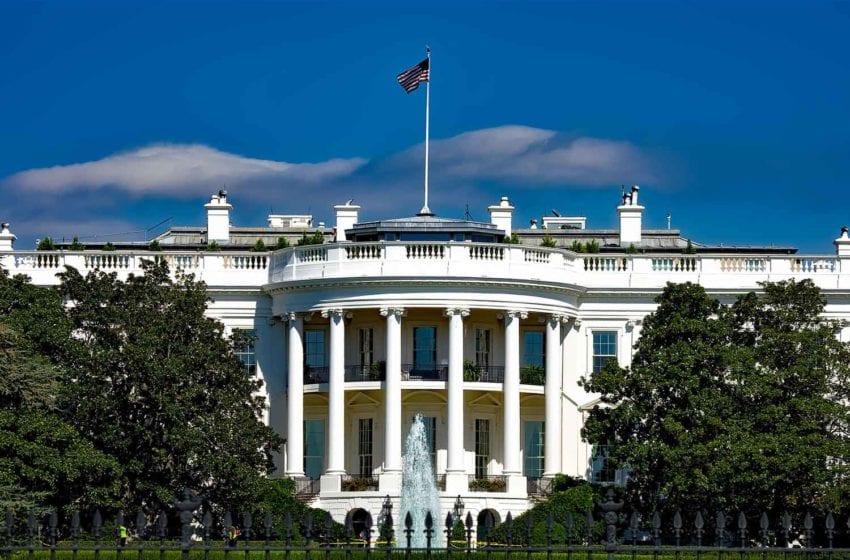By George Gay
Despite its unrivaled scale, the Chinese cigarette market shares many characteristics with markets elsewhere.
China is different.
What’s wrong with the above statement, which I read recently on the internet while researching this story? Well, as most of you will have noticed, it’s the start of a comparison that has not been completed. I mention this partly because it seems to me that in recent times there has been a proliferation of failures in written and verbal English-language communications either to complete comparisons or to get them right: China sold fewer cigarettes than last year.
Of course, most people would say that the example with which I end the previous paragraph doesn’t cause a problem because what has been left out is “understood.” We know instinctively that the sale of cigarettes isn’t being compared with the sale of last year, and we would anyway probably understand from the context that this is not a China-sold-fewer-cigarettes-than-bottles-of-beer sentence. What is meant is China sold fewer cigarettes this year than it sold last year.
“China is different” is a little more problematic. While I think it is clear that China is being compared with other countries, simply because any other comparison would be too odd to contemplate, there must be something more to it than this; there must be something specific. After all, the same could be said about all countries—they’re all different, and therefore all the same in being different.
But in a way, “China is different” has a ring of truth about it for many of us who don’t live there, partly because the country is difficult to get to know. There is, generally speaking, less information available in respect of China than is the case with most other countries, and some of the information that is available turns out to be unreliable. And, from a tobacco perspective, the information that is available is different from what we’re used to seeing. For instance, as is well known, the country develops numbers—leaf production, leaf consumption, tobacco products manufacture, tobacco products consumption—that are much bigger than those of other countries, something that is often recognized in the “global” figures that are bandied about with the proviso “excluding China.” Clearly it would never be noted that “global” tobacco consumption figures excluded those from Chad or Papua New Guinea.
But in many ways, the borrowed statement with which I start this piece is misleading. China’s tobacco industry, for instance, is comparable to those of other countries in many ways. It uses similar machinery to that used elsewhere to produce from universally applied materials cigarettes that resemble closely those produced in other countries, and it packs them in boxes that, apart from their designs, would be familiar anywhere.
The other day, however, I did read something in which the point was made that China operates its tobacco industry almost exclusively as a monopoly, and this would make it different from most other countries, which either never had or a long time ago did away with their monopolies.
But while it is different, it is not very different from a lot of other countries in this respect. I was made aware of this by a piece in The Korea Times in April. According to the Times, South Korea’s Fair Trade Commission (FTC) has said that it will review the government’s regulations on the nation’s tobacco market (along with its beer and whiskey markets), which it sees as being dominated by a small number of players. An FTC official said that, based on market concentration research in 2013, tobacco companies in Korea enjoyed high net value returns on sales but spent too little on R&D, raising concerns about their competitiveness and consumers’ rights. “The government should consider competition-increasing policies in those markets,” the official said.
There are a number of interesting points here, one of which is that South Korea’s tobacco products marketplace doesn’t seem to be a particularly concentrated one when you look at the likes of the markets in Brazil, the U.S., India, the U.K. And while China’s tobacco industry is a monopoly, within it have been created a number of companies that, in theory at least, compete with one another.
The important question here surely is whether or not consumers are provided with a good variety of products from which they can choose. And I suspect that the answer to that question is possibly not, whether you are talking about China or most other countries, as the people at South Korea’s FTC have come to realize. In most places, including China, choice is being reduced in the name—sometimes unstated—of corporate efficiency, because of regulations and by tax policies.
So will the probe in South Korea be the start of a new dawn for smokers? I think not, even though reduced levels of competition almost certainly play into the hands of the illegal trade in tobacco products. Again, whether one is talking about China or another country, governments are aware that cigarette excise tax is a most efficient tax to collect but that that efficiency will drop away as the number of companies that enter the market increases. And governments are addicted to tobacco tax. In China, in 2015, total industrial and commercial profits and taxes from the country’s tobacco manufacturing sector amounted to cny1.1 trillion ($176.1 billion), of which commercial profits and taxes accounted for almost 35.3 percent of total profits, according to State Tobacco Monopoly Administration figures quoted by TMA. Profits and taxes taken together were up by more than 8.7 percent, or more than cny91.8 billion, when compared with 2014’s total profits and taxes. It would, I think, be unwise to treat such a revenue stream in a cavalier manner.
Familiar issues
China is not so very different from other countries in other respects, also. I wrote above that “China sold fewer cigarettes than last year” as an example of a misaligned comparison, but the idea behind it was not wrong. Volume sales of tax-paid cigarettes in China last year, at 2.49 trillion pieces, were down by almost 2.4 percent from those of 2014. According to a Bloomberg News story, there were a number of reasons why this was the case, most of which would be familiar to people researching cigarette sales declines in other countries. Cigarette consumption tax was increased in China in May 2015 and, in general, cigarette prices have been increasing at a faster rate than the prices of other consumer goods. In addition, Beijing introduced a tobacco smoking ban in all indoor public places and some outdoor areas, effective June 1, 2015.
And sales don’t look set to increase significantly in the near future. Cigarette prices were increased by 6.3 percent in February, when compared with those of February 2015, while, at the same time, the prices of all consumer goods were increased by 2.3 percent. In addition, smoking among male teenagers in China has been declining during the past 25 years. A February news story citing research from Saint Louis University and Chongqing University, noted that two-thirds of Chinese men become daily smokers before they turn 25 years of age, with the vast majority starting the habit when they are between 15 and 20 years of age. “Even though the smoking rate remains high in China, over the last 25 years the rate of adolescent males starting to smoke has gotten smaller by an average of one percent a year,” said Jin Huang, one of the paper’s authors and assistant professor of social work at Saint Louis University’s College for Public Health and Social Justice. “Our findings suggest over the long term we might see reduced smoking rates in China.” Females were not included in the study because fewer than 4 percent of them smoke.
It is difficult to understand why this decrease might have occurred, given what we are told about the power of advertising and retail displays, because, according to a report in the China Daily in January, students in Beijing have easy access to tobacco products and are regularly exposed to tobacco advertising.
But then it is difficult to understand also why these students are still so exposed to tobacco advertising. China’s revised advertising law, which came into force in September 2015 after having been approved by the Standing Committee of the National People’s Congress in April 2015, specifically prohibits advertisements that target minors and specifically bans tobacco advertising in schools and educational materials. More generally, the law bans tobacco product advertising in the mass media, in public places and on public transportation, and it bans also the use of tobacco brand logos and trademarks in support of other products and services.
Another factor to be taken into account is that while, at 27 percent, China’s adult smoking prevalence is at the same level now as it was in 2010, the total smoking population has risen by 15 million to 316 million, according, that is, to the results of a survey carried out toward the end of last year. The Chinese Adult Tobacco Use Survey 2015, conducted by the Chinese Center for Disease Control and Prevention, found that, currently, more than half of Chinese adult men and 2.7 percent of adult women smoke. It found also that, on average, each smoker consumed 15.2 cigarettes a day, compared with 14.0 in 2010, when the previous survey was conducted. More than 15,000 people over the age of 15 were interviewed as part of the survey, the results of which were released in December.
Looking further ahead, it is possible to speculate about whether China’s move from a one-child-per-family system to a two-children-per-family system might have any effect on smoking levels. Taken at face value, this move could mean that the smoking population would increase significantly in 15–18 years’ time. But this would depend on how strictly the one-child policy was enforced and how strictly the two-child policy will be enforced—in other words, on how much real difference the change will mean.
Of course, it is to be hoped that in 15–18 years’ time, wiser heads will have prevailed and the whole world—not excluding China in this case—will have embraced tobacco harm reduction in the form of vaping or whatever new development has come along (also see “A preventive strike,” page xx). Certainly, it is to be hoped that we’re not fighting the same old battles with the same old weapons, such as graphic health warnings.
China has for the moment said no to such warnings. A top tobacco monopoly official was quoted as saying at the National People’s Congress in March that graphic health warnings would be incompatible with “Chinese cultural traditions.” Duan Tieli, deputy director of China’s State Tobacco Monopoly Association, told reporters the monopoly therefore had no intention of applying graphic warnings to its cigarette packaging. Just how long China can hold this line against the importuning of the World Health Organization is not clear, however. Voices in South Korea, I seem to remember, used to say that such warnings were incompatible with local culture, but they are due to appear there from the end of this year.












